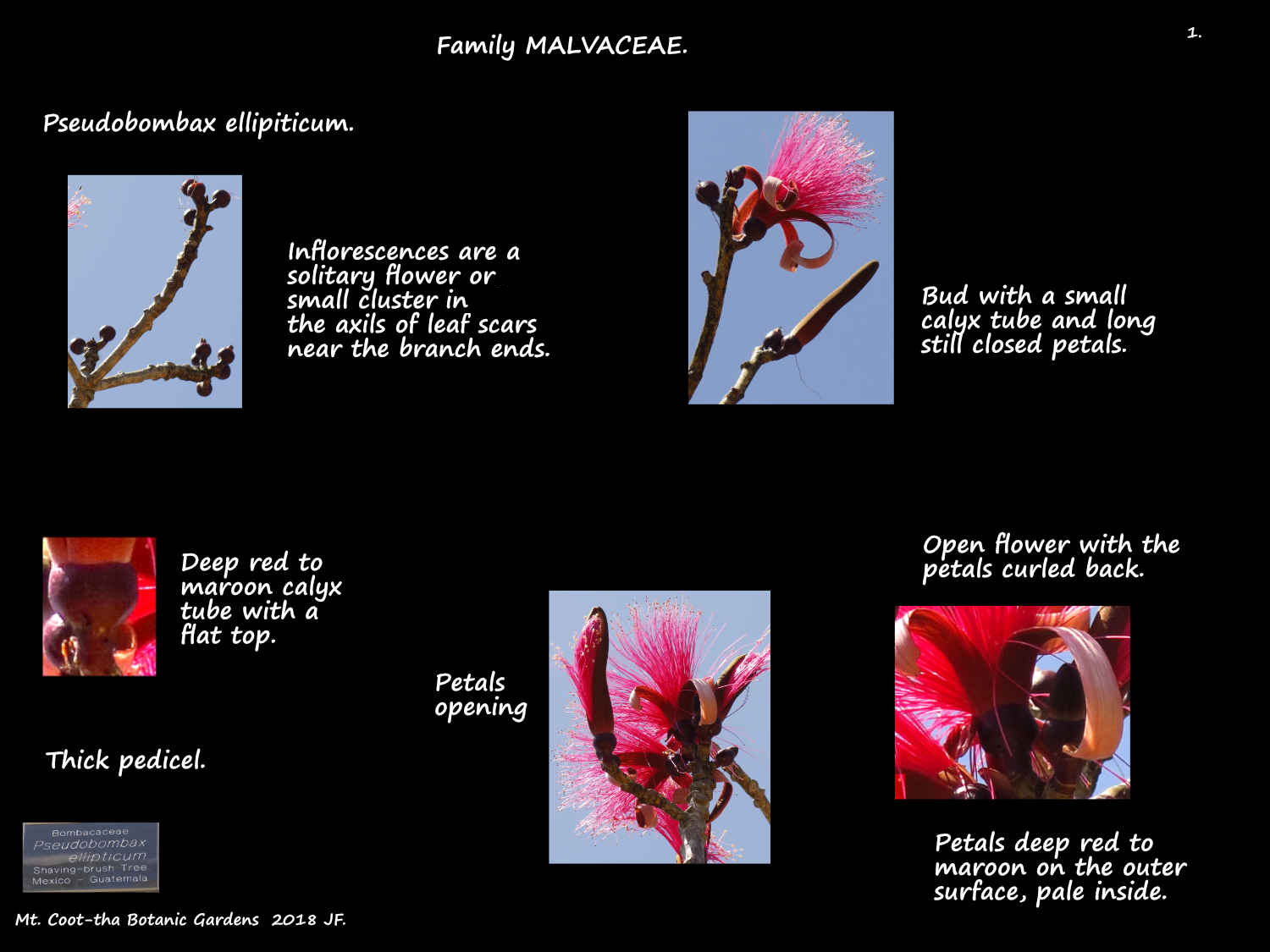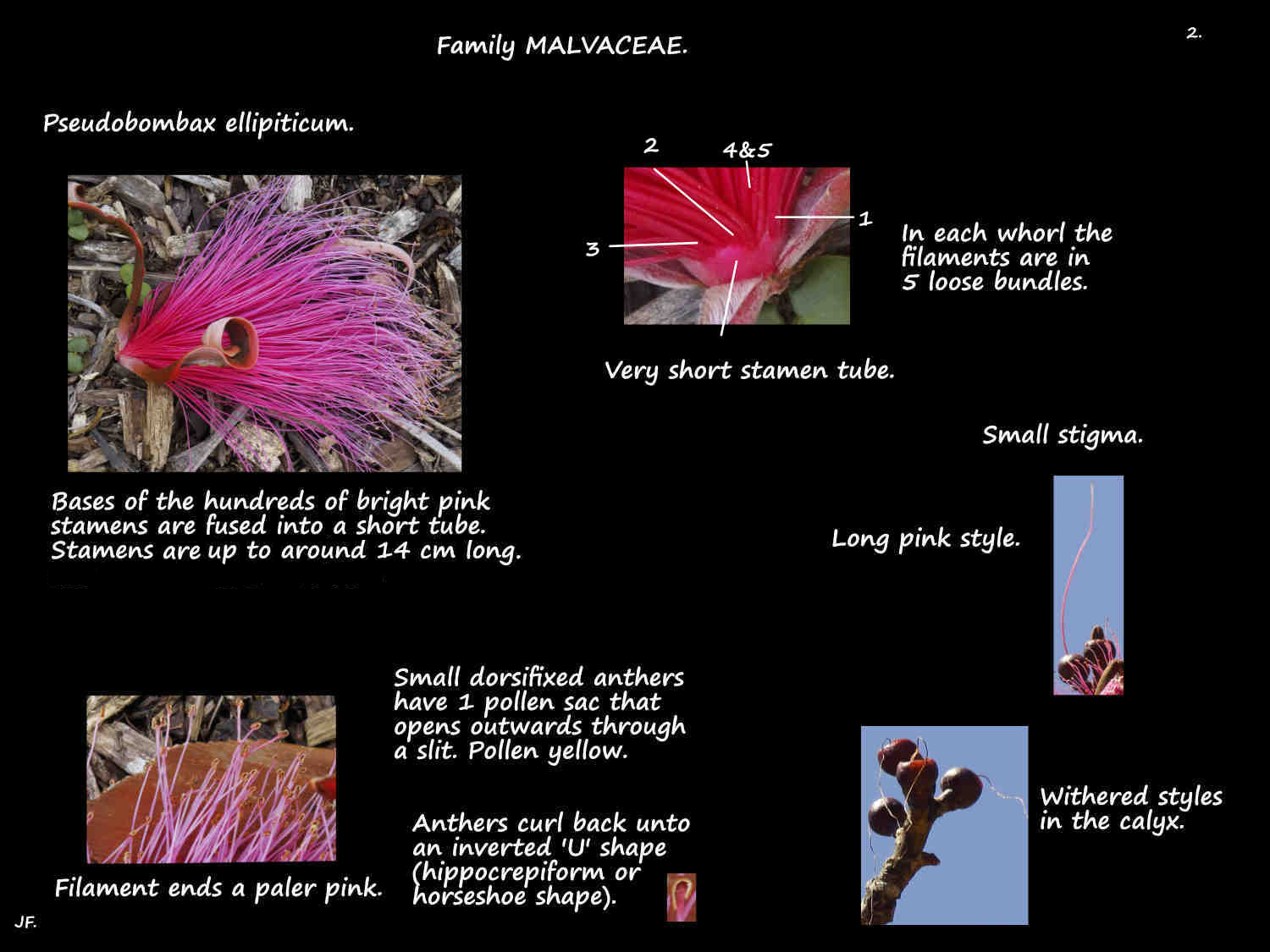Pseudobombax ellipticum is in Family Malvaceae > Subfamily Bombacoideae.
Known as the Shaving Brush Tree Bombax ellipticum is a synonym.
It is from Central to South America and the Caribbean Islands to the east.
It is a small to medium tree up to 18 m in the wild.
The lower part of the trunk is swollen and can be over 1 m across.
The smooth bark is grey-green on the trunk and bright green on the twigs.
Branches begin low down on the trunk.
The leaves fall in winter and flowers appear before the new ones.
The alternate leaves are on a long petiole.
The palmate blade has 5 (3 to 6) elliptic to ovate leaflets.
Leaflets are up to around 20 cm long and 15 cm wide.
Shiny new leaves are dark maroon.
Inflorescences are in the axils of leaf scars near the end of small branches.
Flowers, 15 to 20 cm across can be solitary or in a small cluster.
They are on a thick stalk (pedicel).
The small cup-shaped calyx has a flat rim that may have tiny lobes.
The 5 thick oblong petals are up to 15 cm long and only a few cms wide.
They are bright pink to red on the outside and pale inside.
There are short soft hairs on the outer surface.
As the flowers open the petals curl back.
There are hundreds of stamens with bright or pale pink filaments.
Up to around 14 cm long the are usually a little shorter than the petals.
The filament bases are fused into a very short tube.
On the rim the stamens are in 2 whorls.
In each whorl they are grouped into 5 bundles.
The superior ovary has 5 locules each with numerous ovules.
The long style has a small stigma.
Fruit are a loculicidal capsule (ruptures into each locule).
Up to 25 cm long the pale brown capsules have hundreds of seeds.
The tiny black seeds are surrounded by fibres known as kapok.
There are a number of subspecies, forms, varieties etc. including one with white flowers.
J.F.



